Abstract
The current study aimed to develop a behavior-analytic model of analogical reasoning. In Experiments 1 and 2 subjects (adults and children) were trained and tested for the formation of four, three-member equivalence relations using a delayed matching-to-sample procedure. All subjects (Experiments 1 and 2) were exposed to tests that examined relations between equivalence and non-equivalence relations. For example, on an equivalence-equivalence relation test, the complex sample B1/C1 and the two complex comparisons B3/C3 and B3/C4 were used, and on a nonequivalence-nonequivalence relation test the complex sample B1/C2 was presented with the same two comparisons. All subjects consistently related equivalence relations to equivalence relations and nonequivalence relations to nonequivalence relations (e.g., picked B3/C3 in the presence of B1/C1 and picked B3/C4 in the presence of B1/C2). In Experiment 3, the equivalence responding, the equivalence-equivalence responding, and the nonequivalence-nonequivalence responding was successfully brought under contextual control. Finally, it was shown that the contextual cues could function successfully as comparisons, and the complex samples and comparisons could function successfully as contextual cues and samples, respectively. These data extend the equivalence paradigm and contribute to a behaviour-analytic interpretation of analogical reasoning and complex human functioning, in general.
Full text
PDF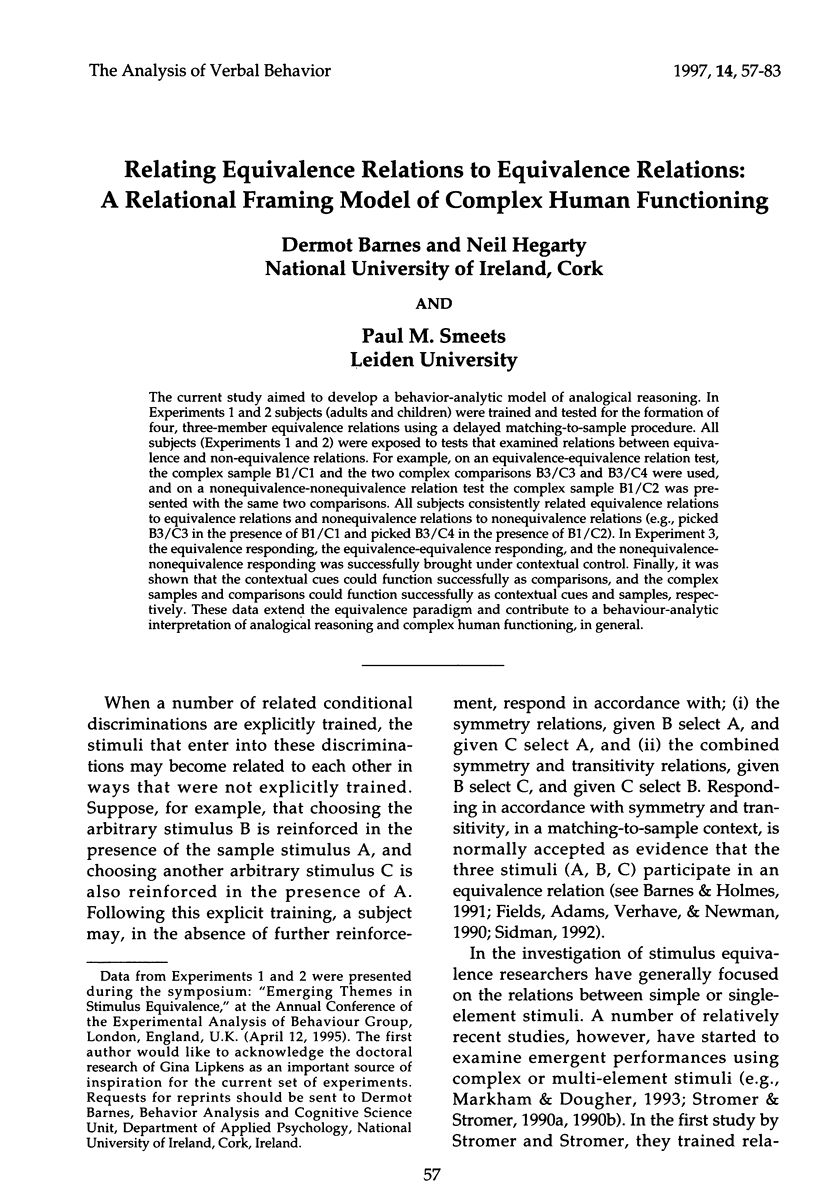
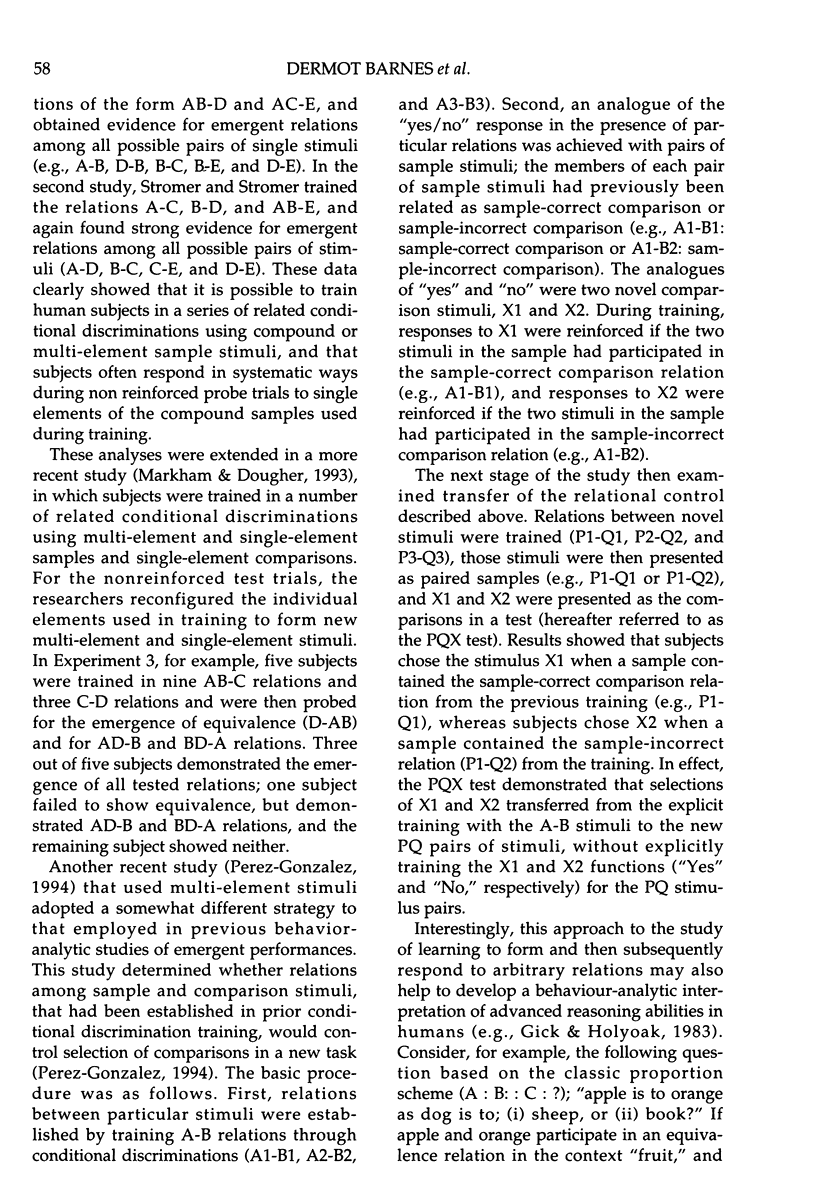
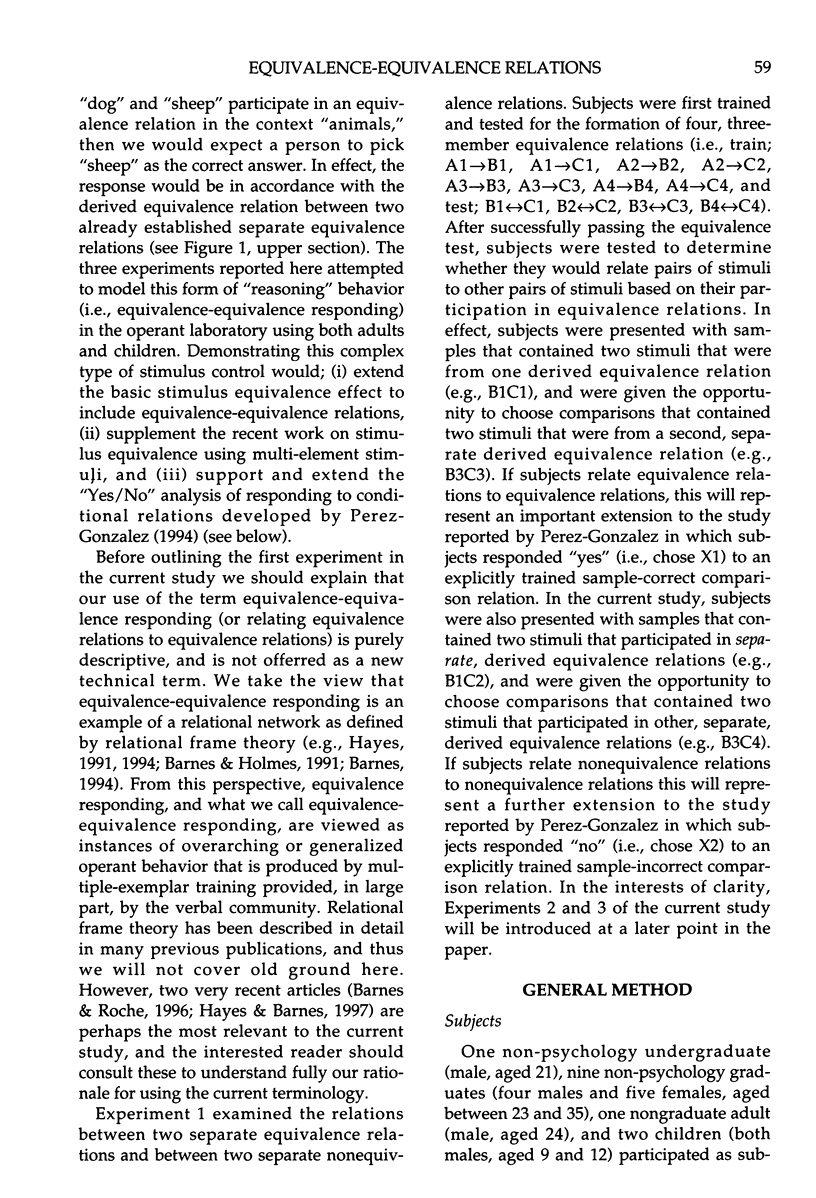

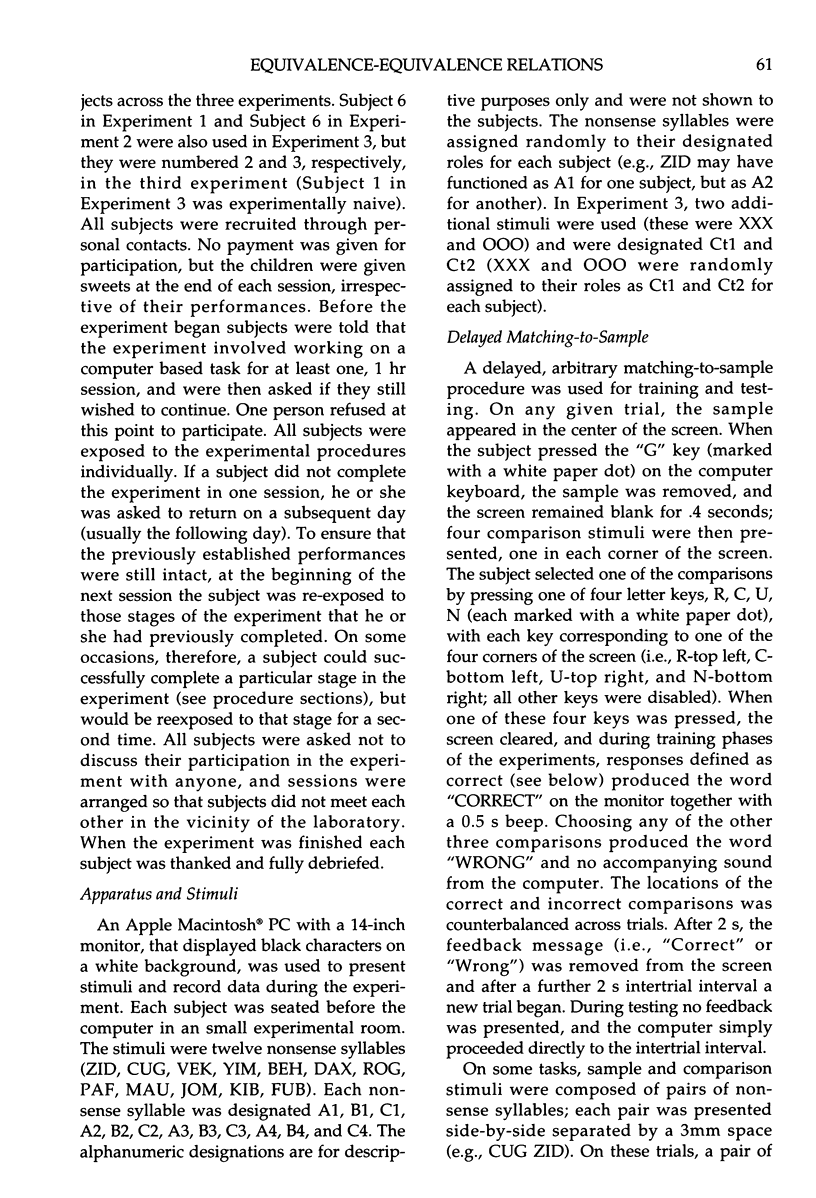
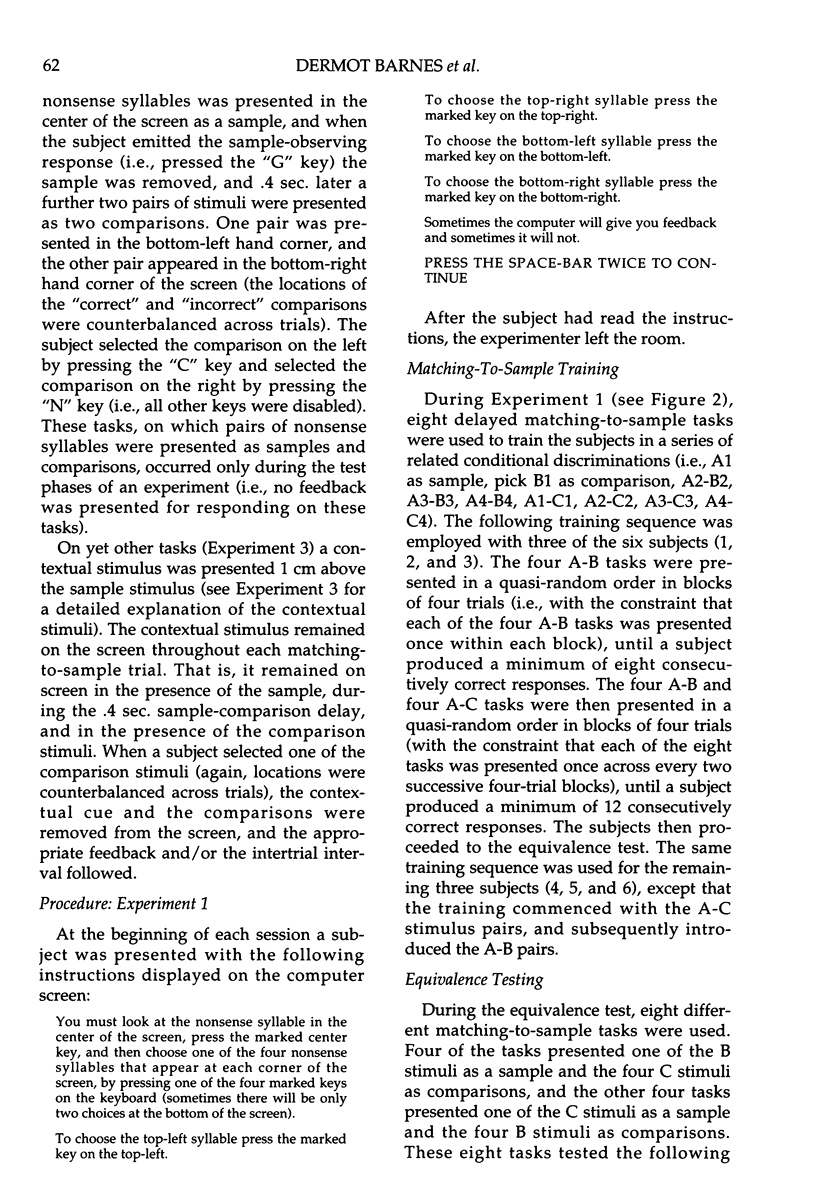
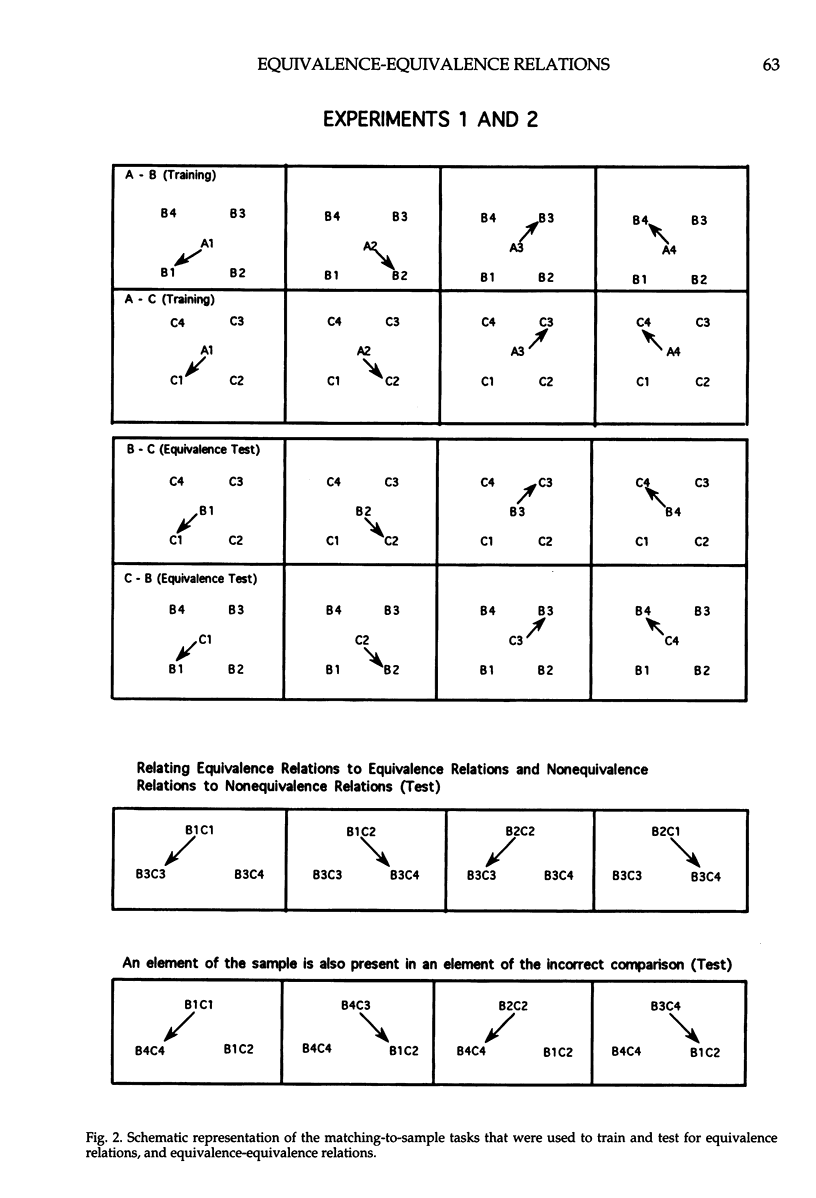
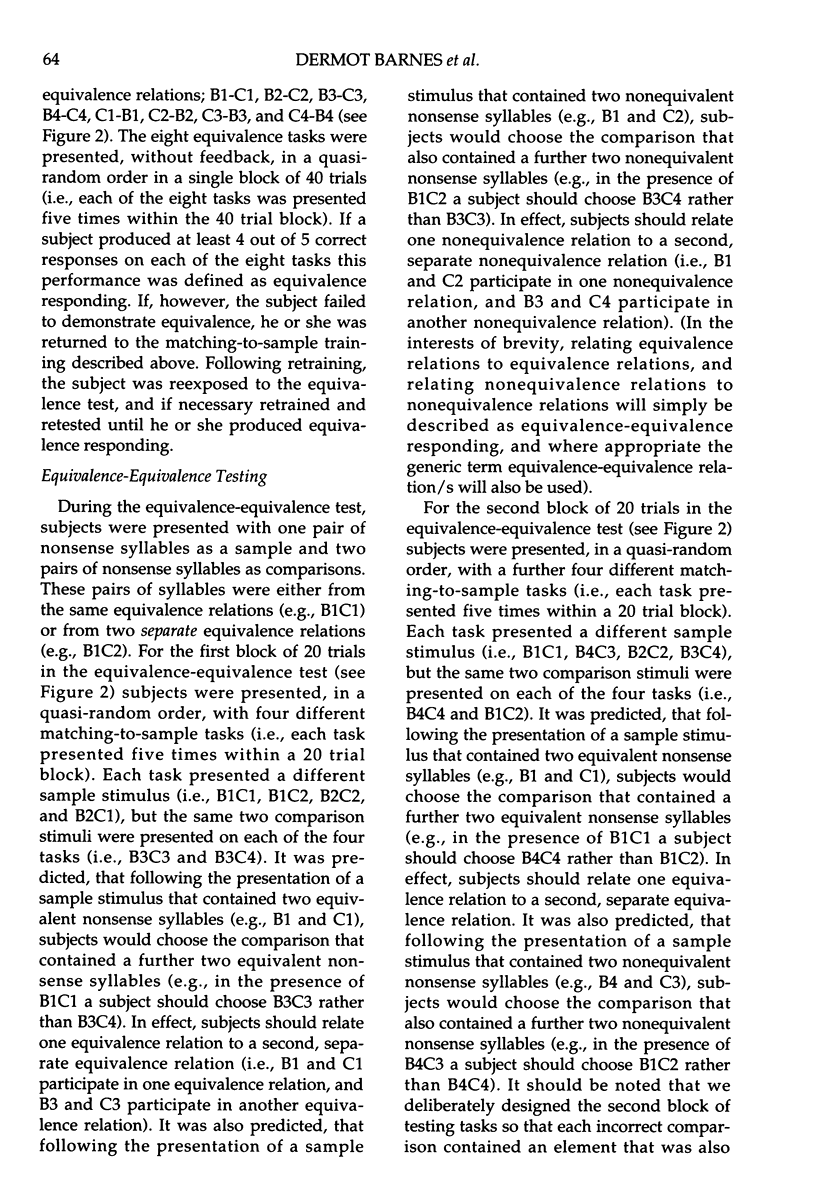
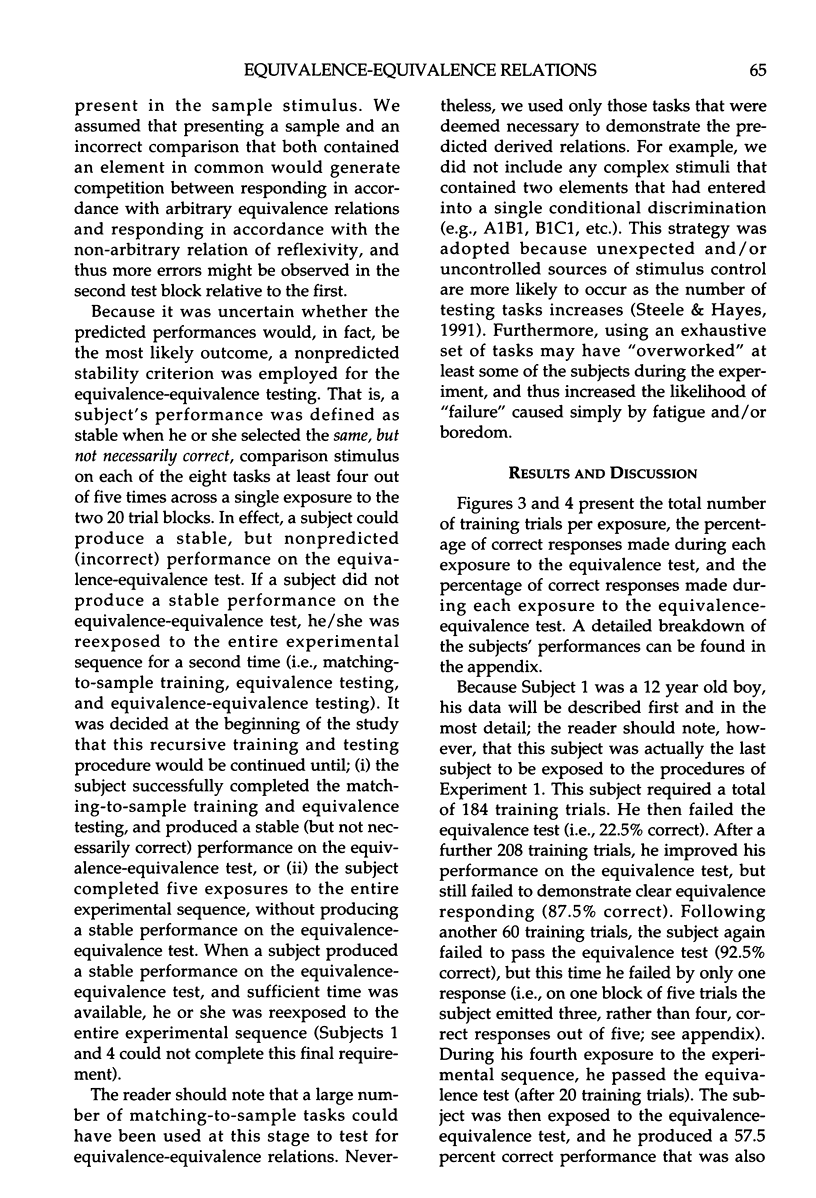
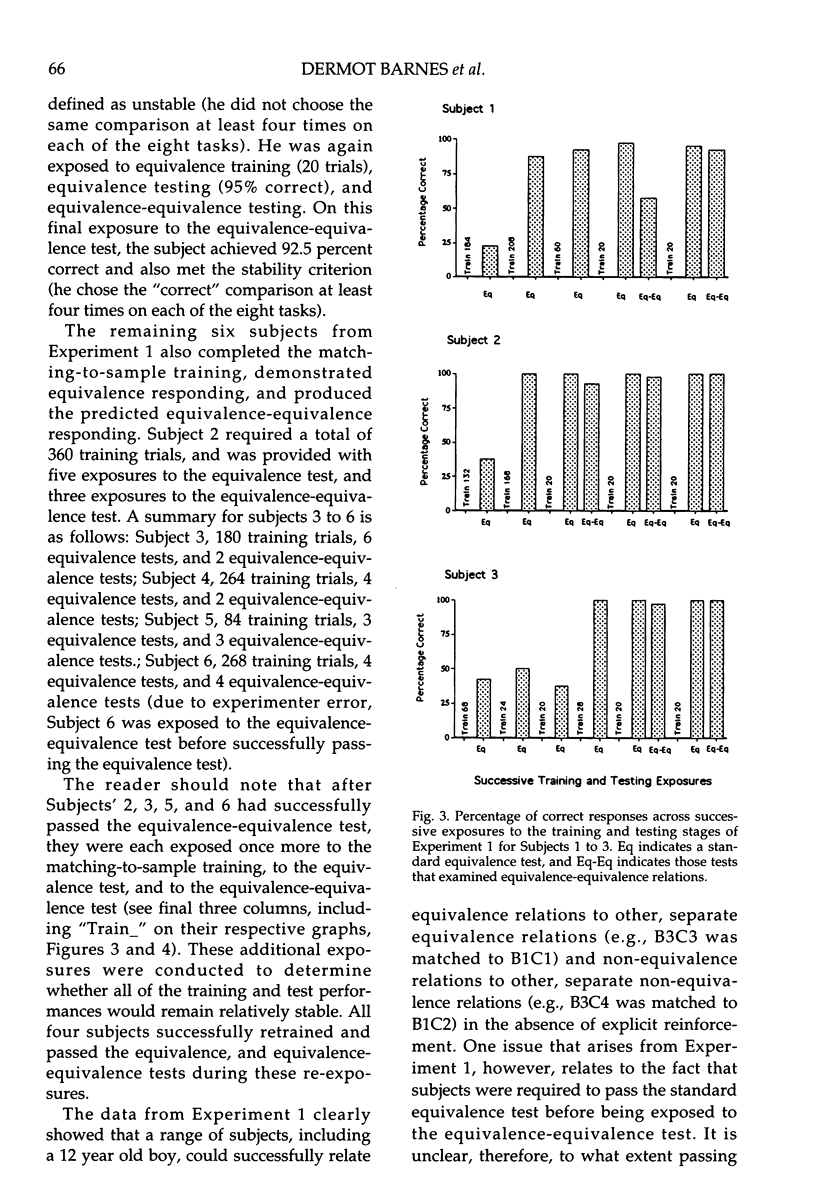
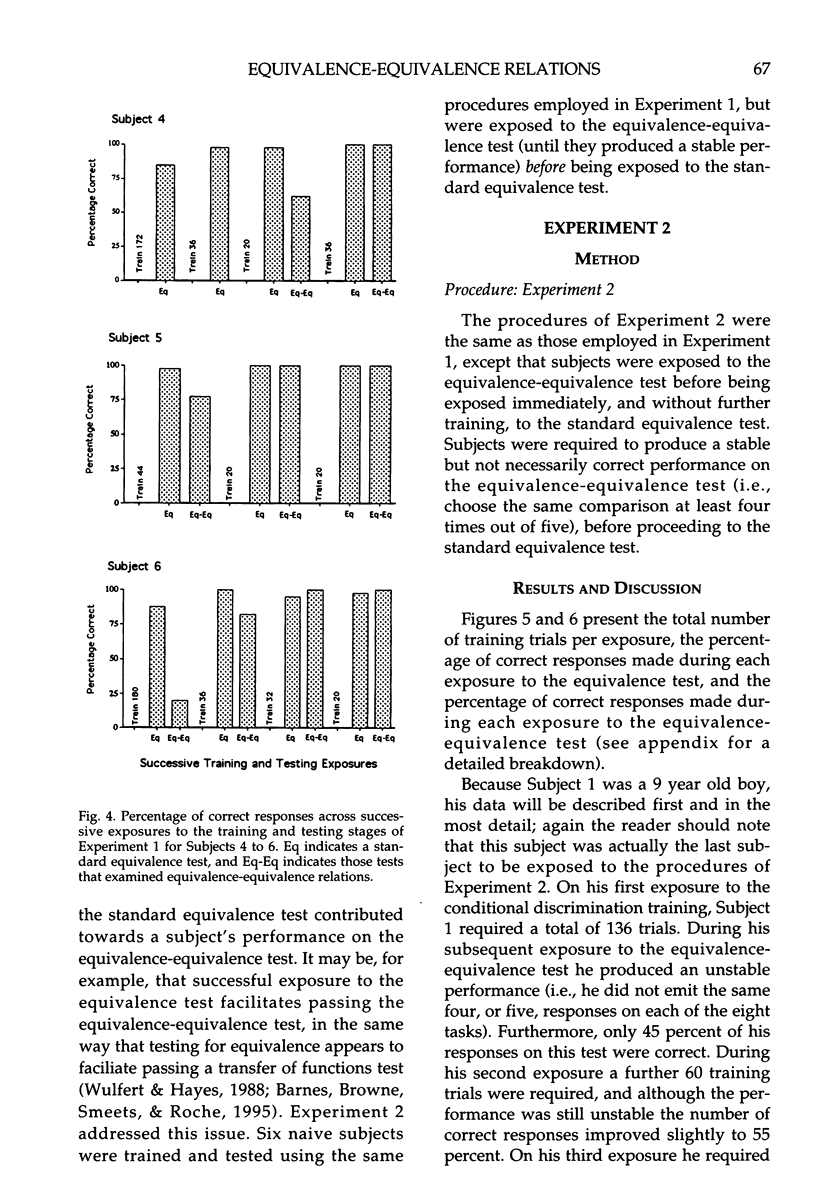
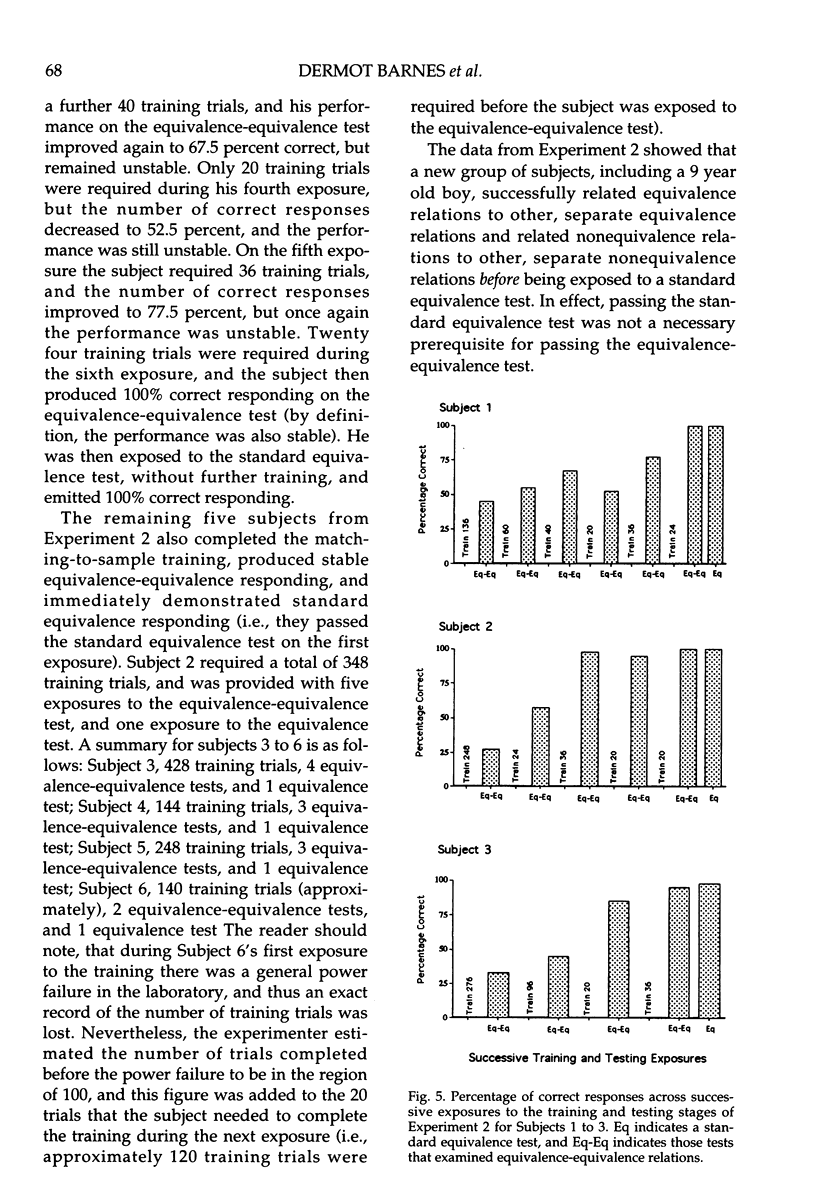
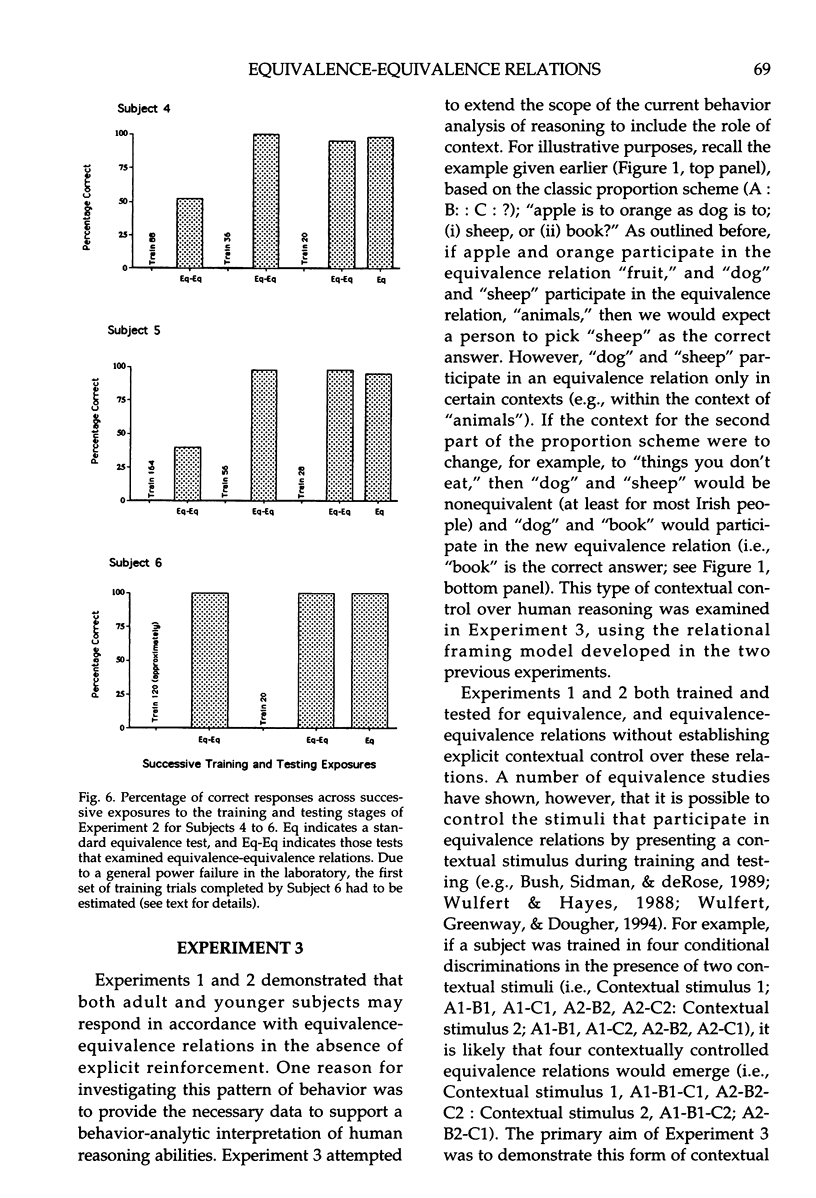
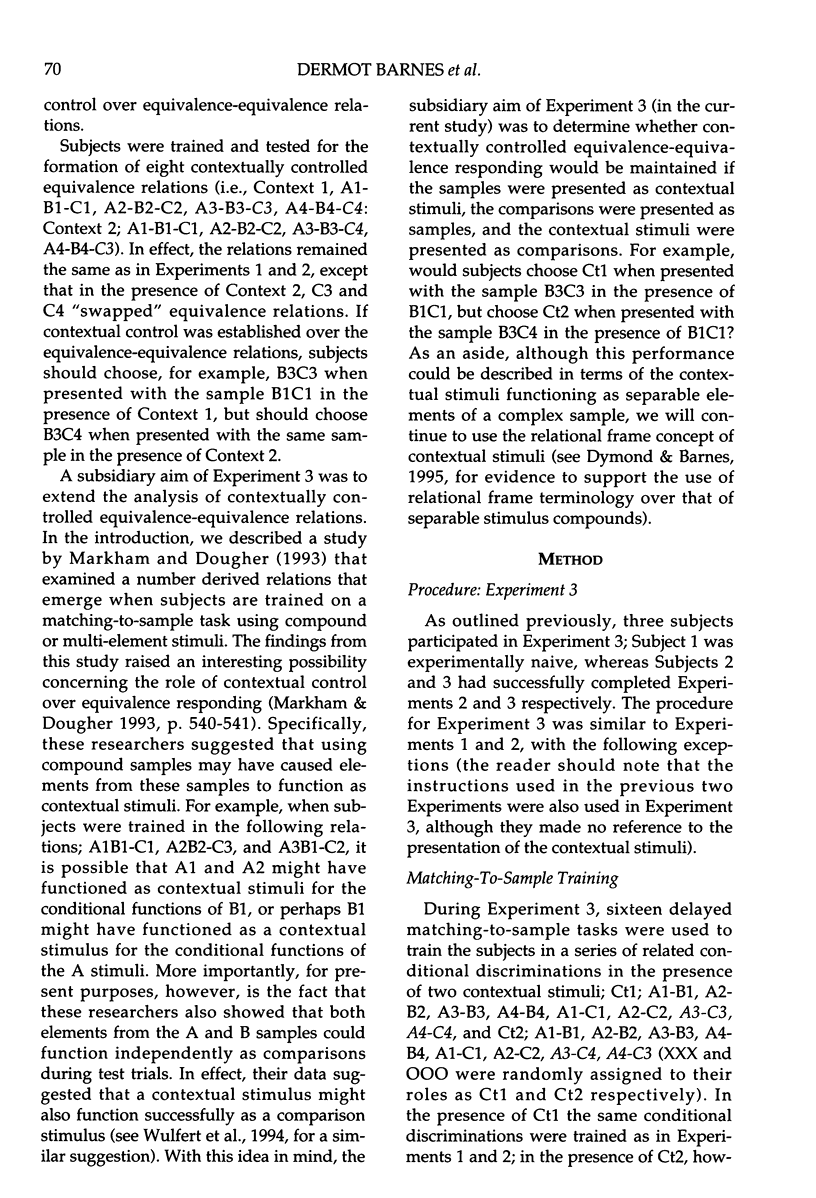
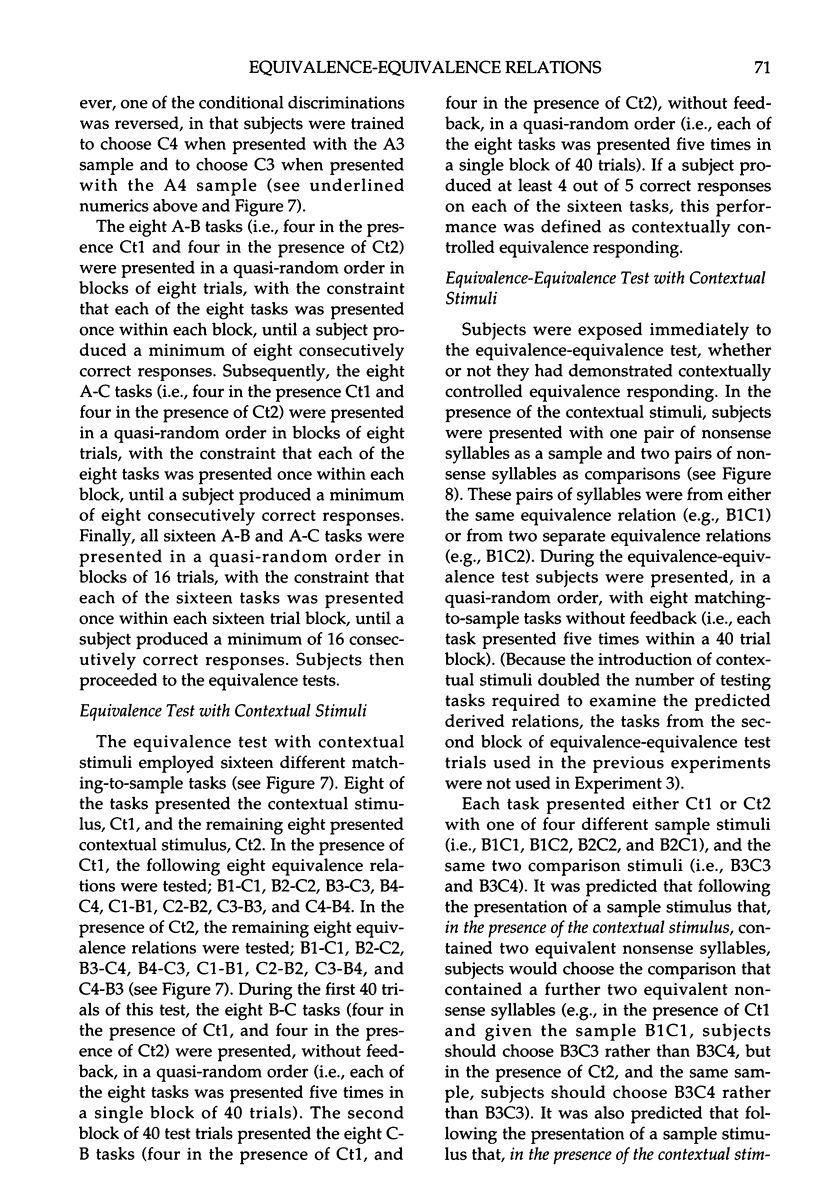
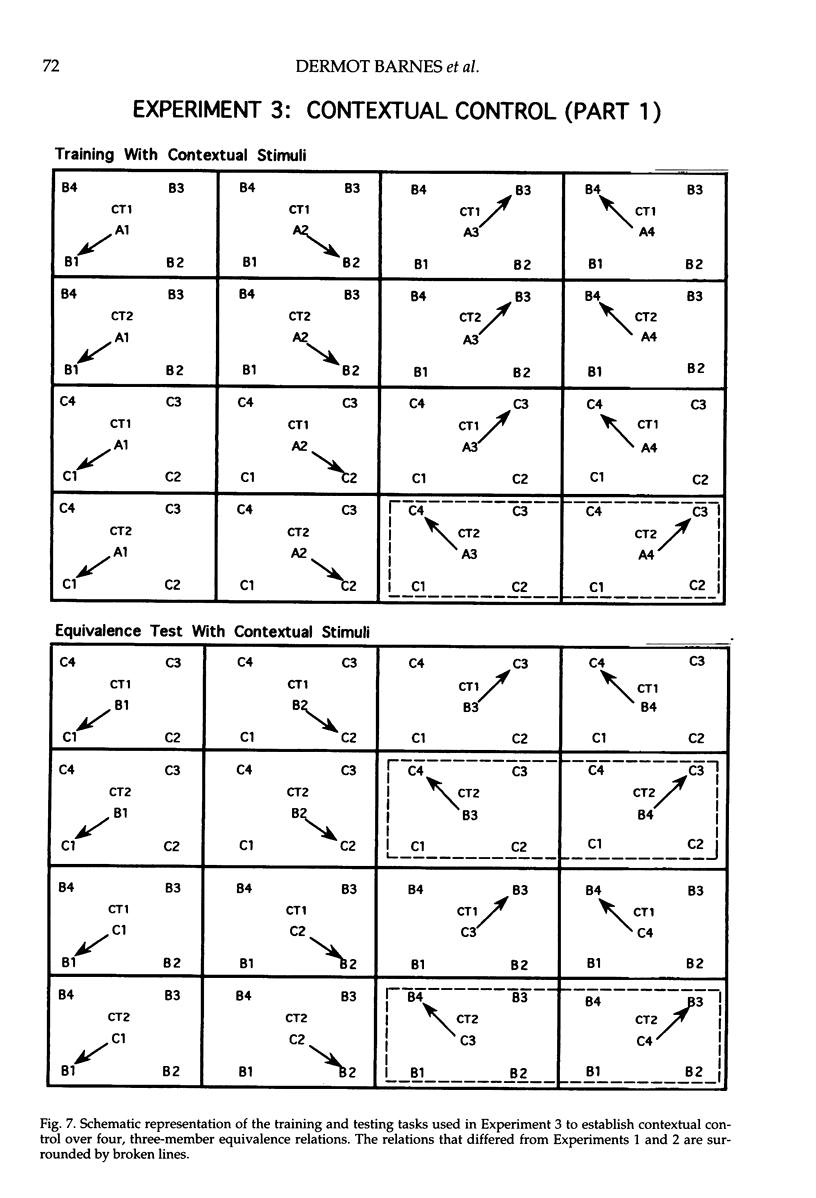
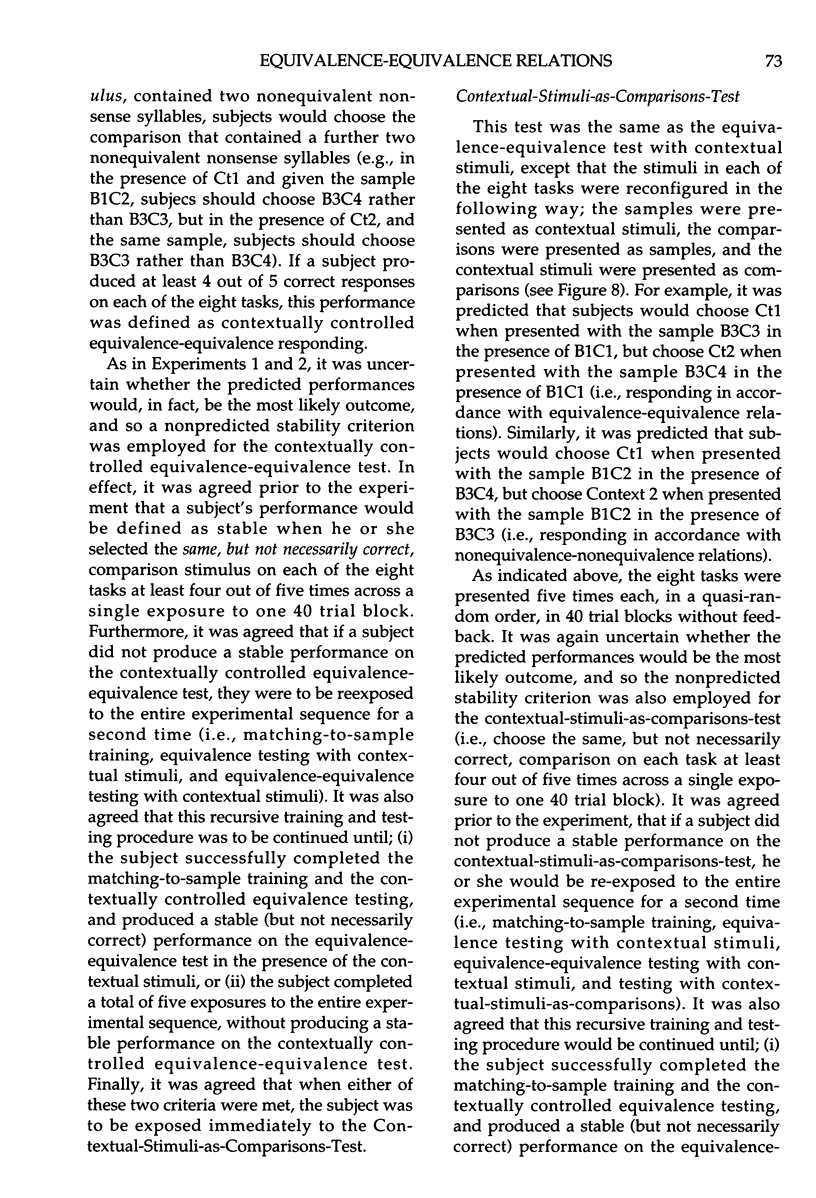
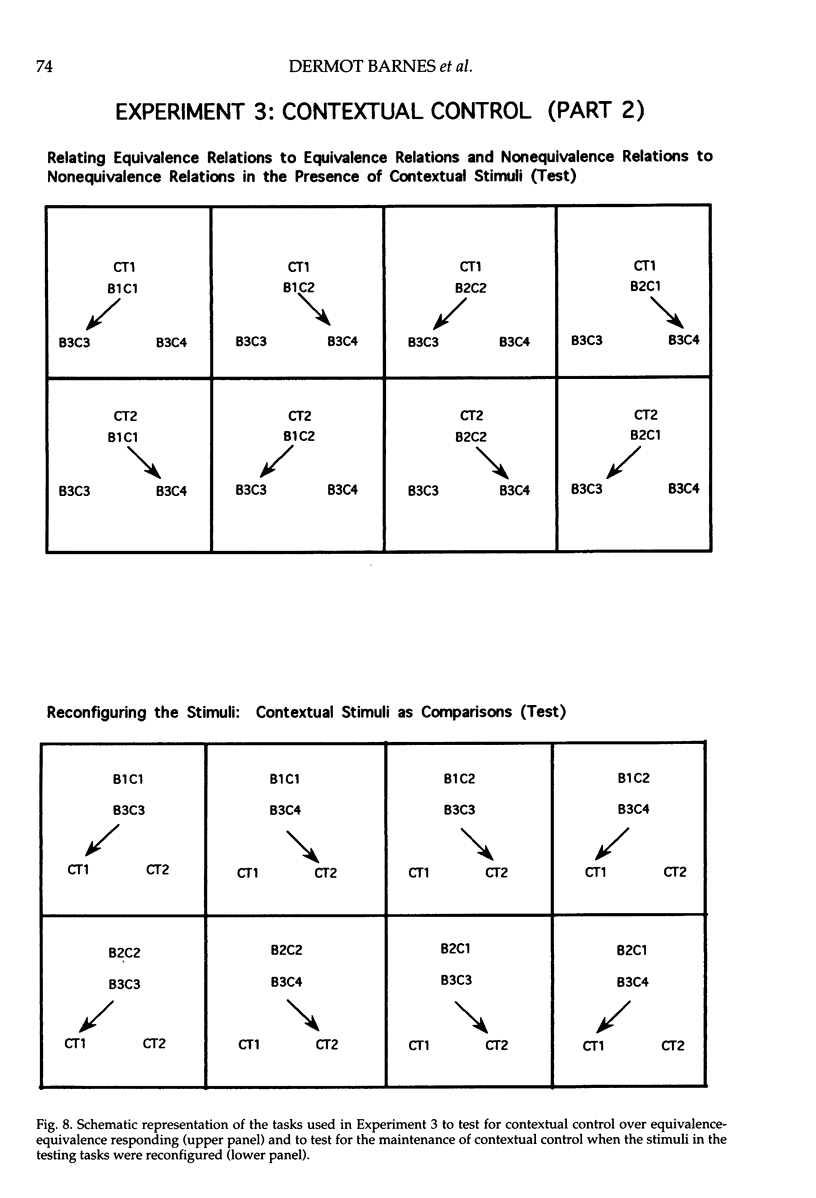
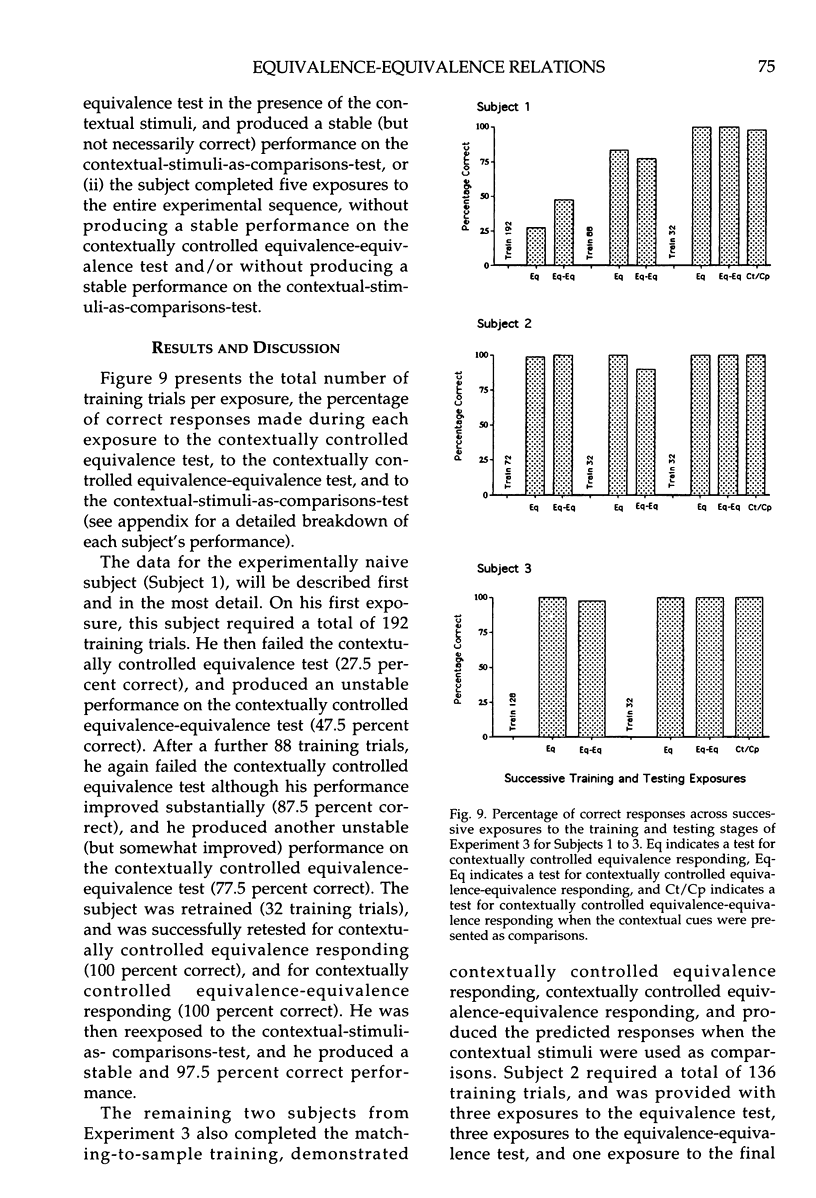
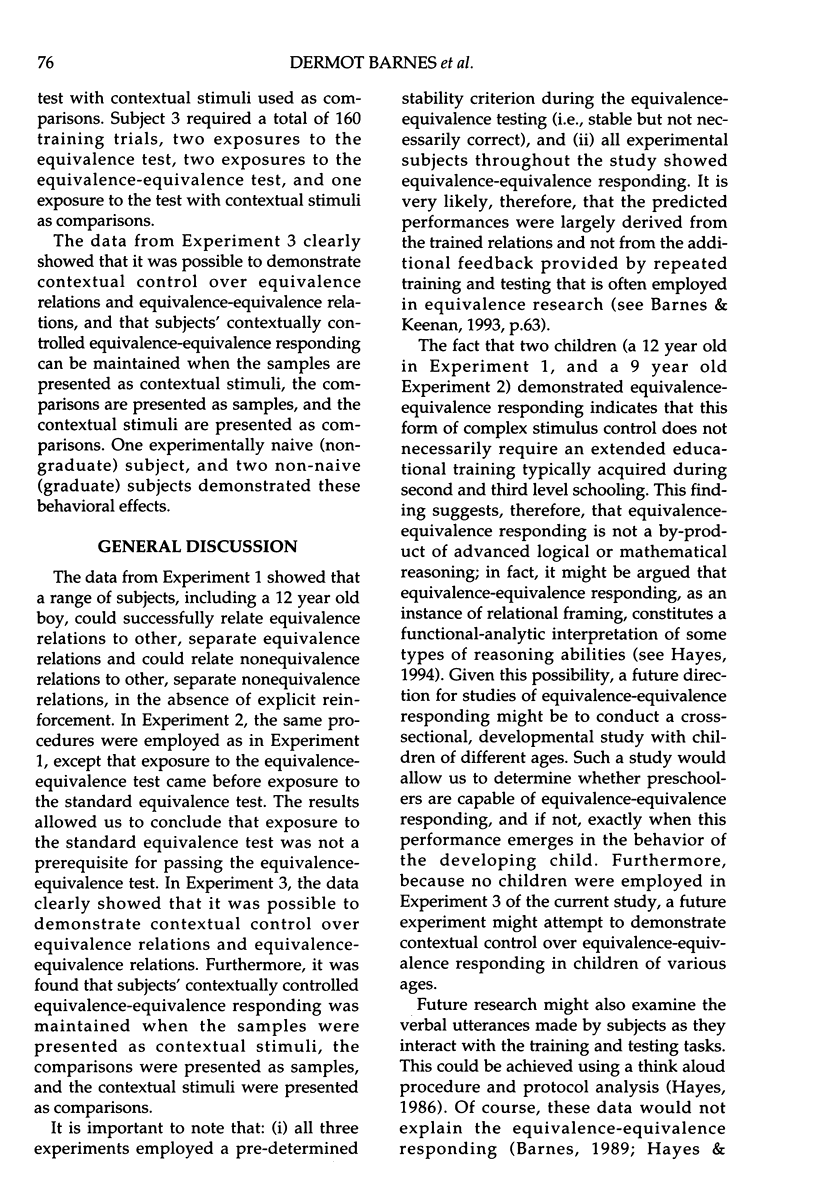
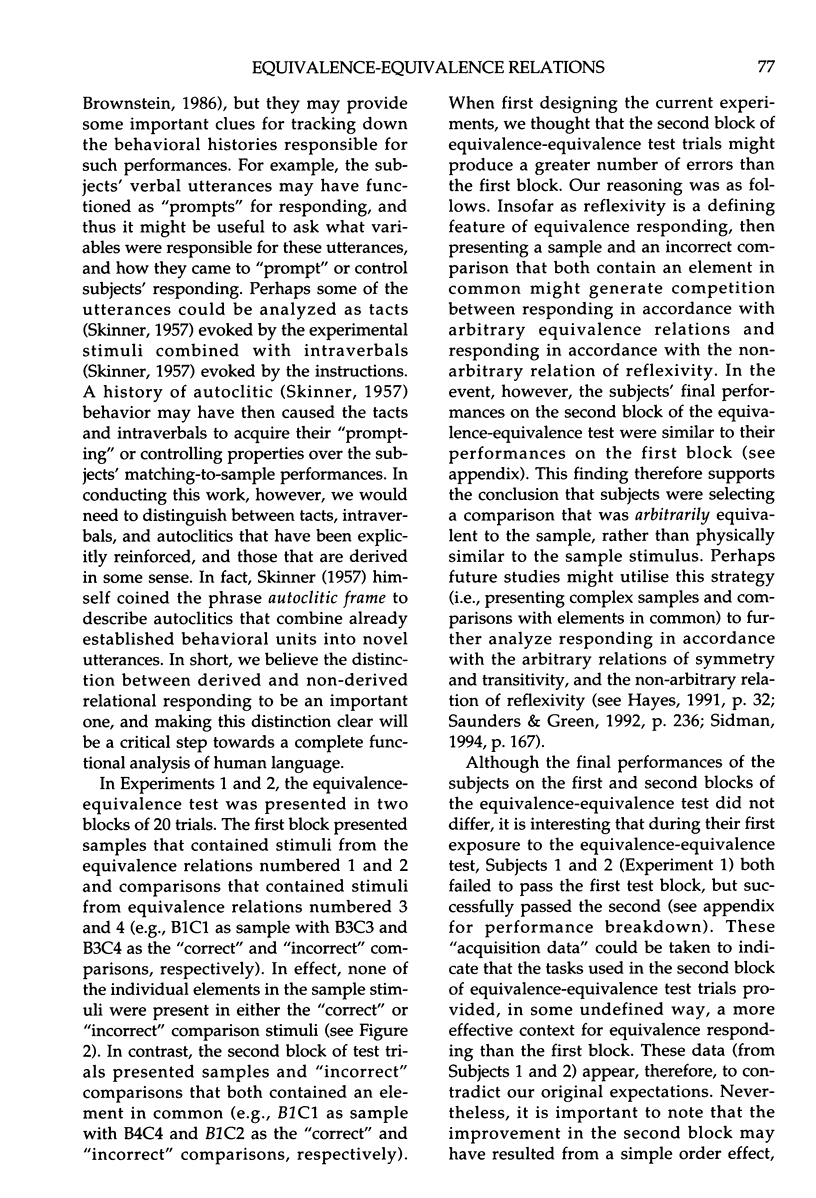

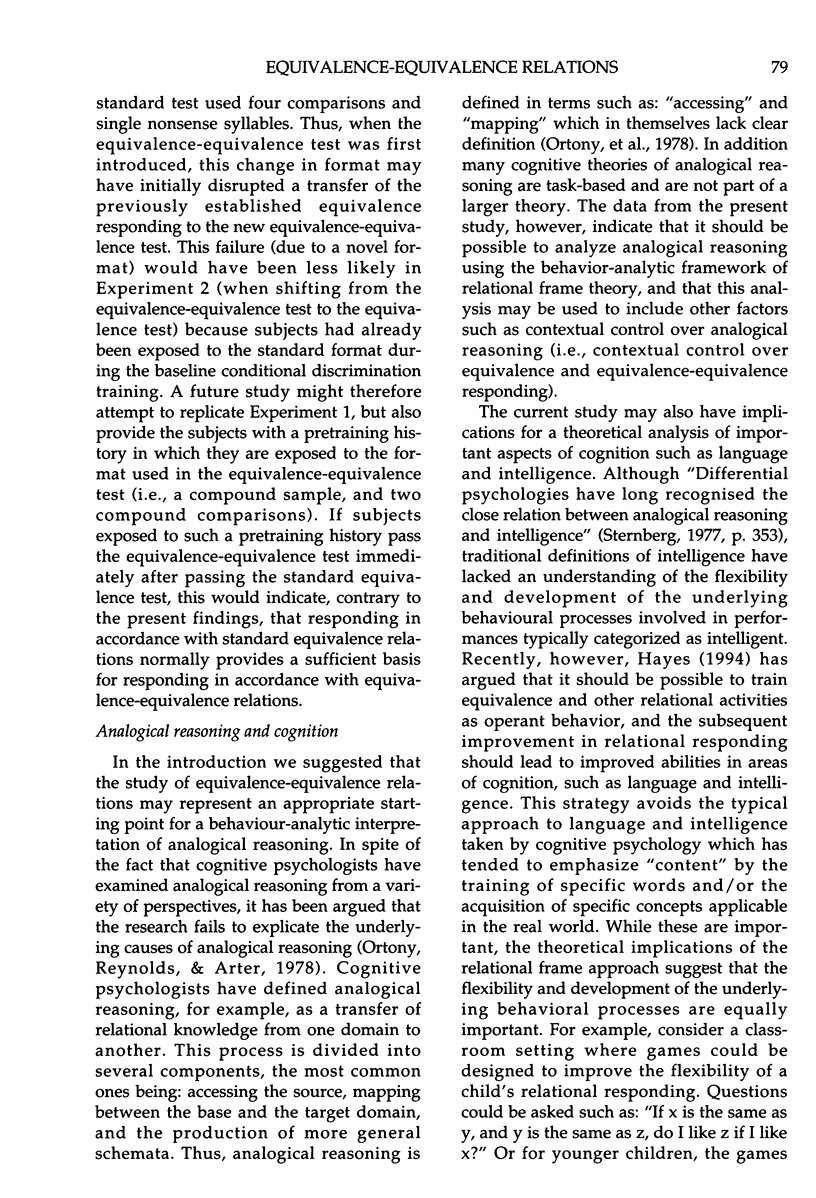
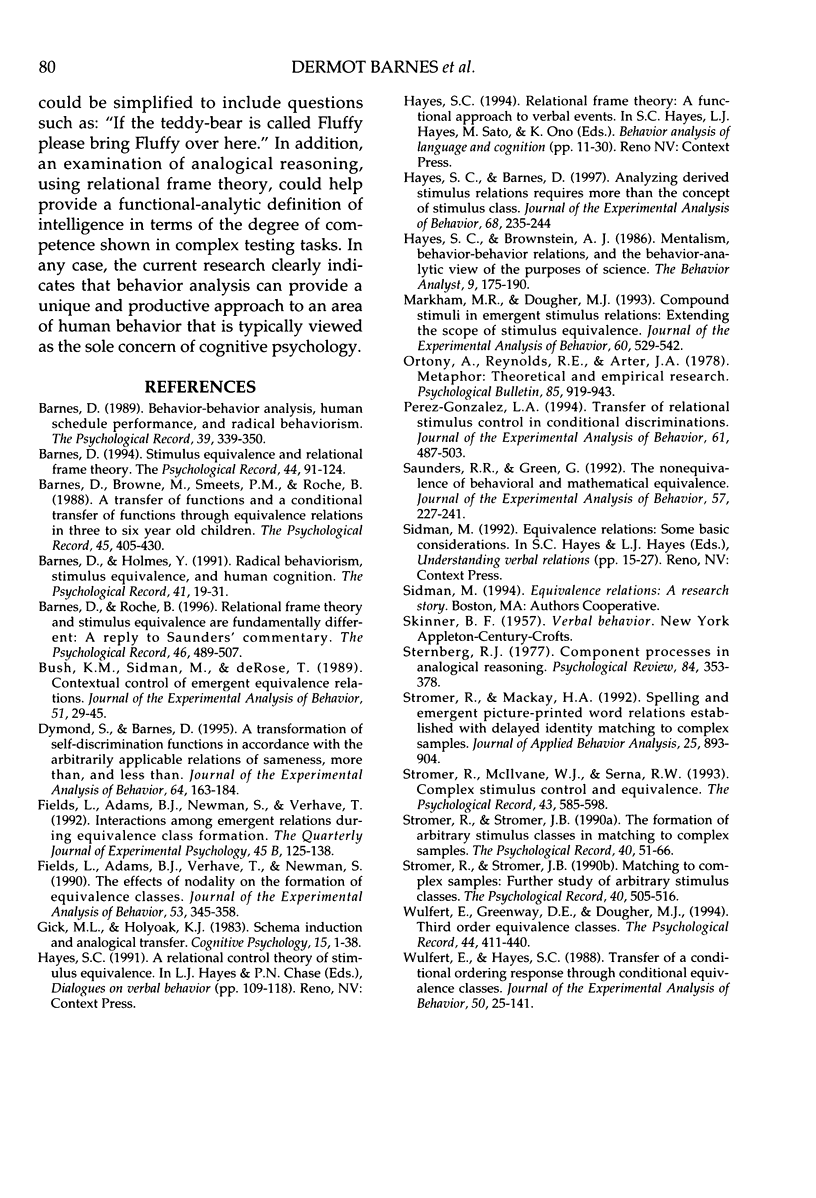
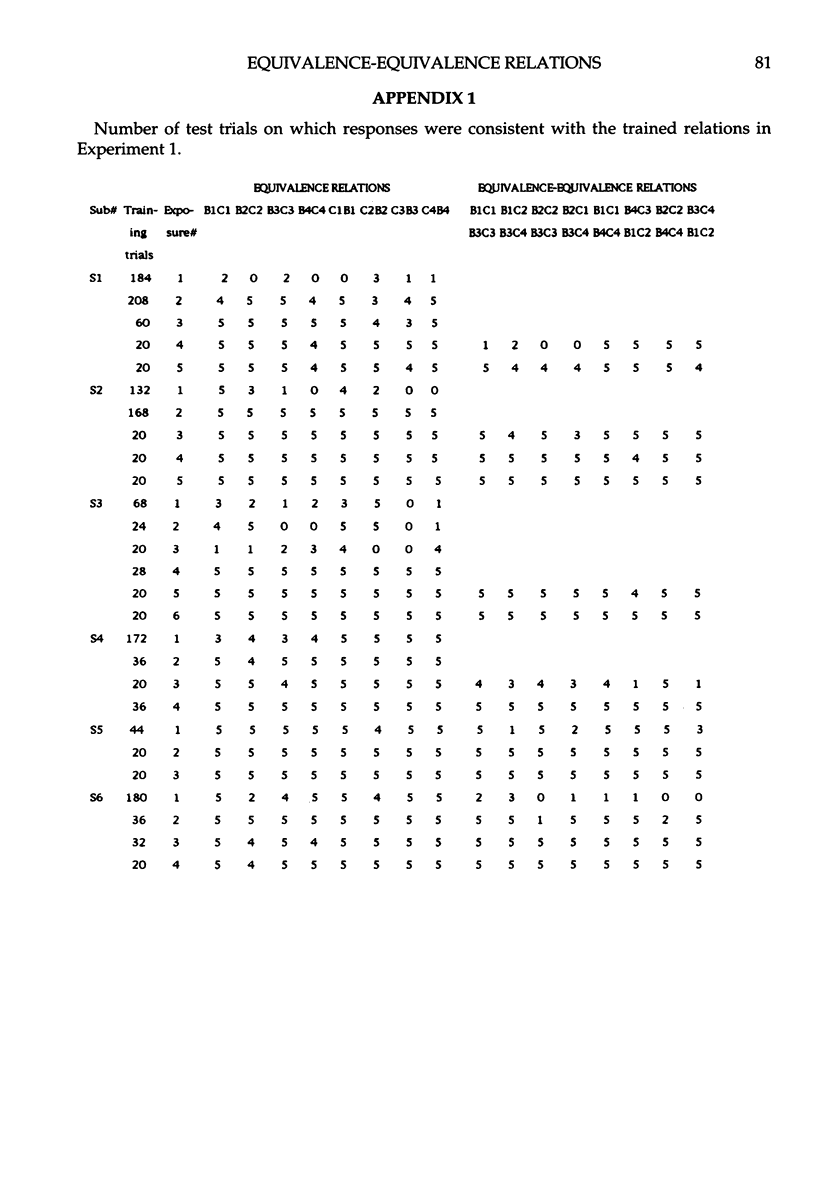
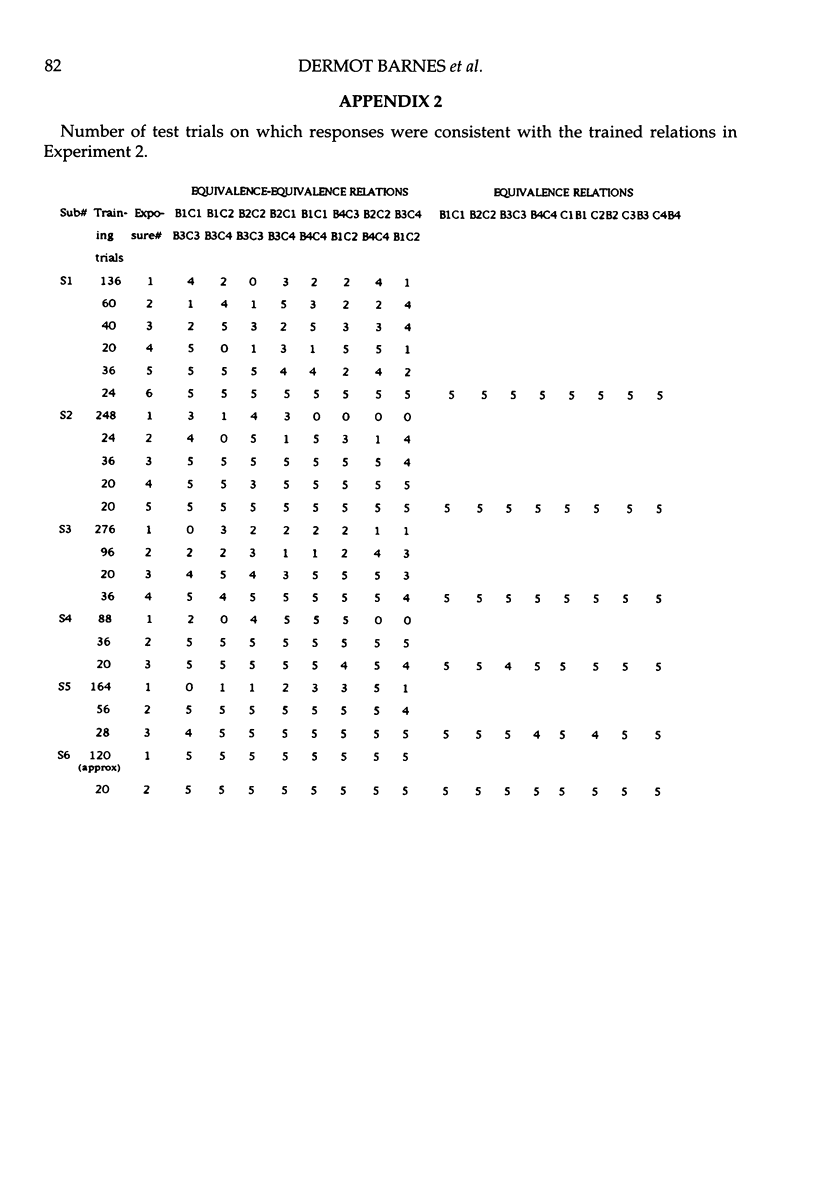
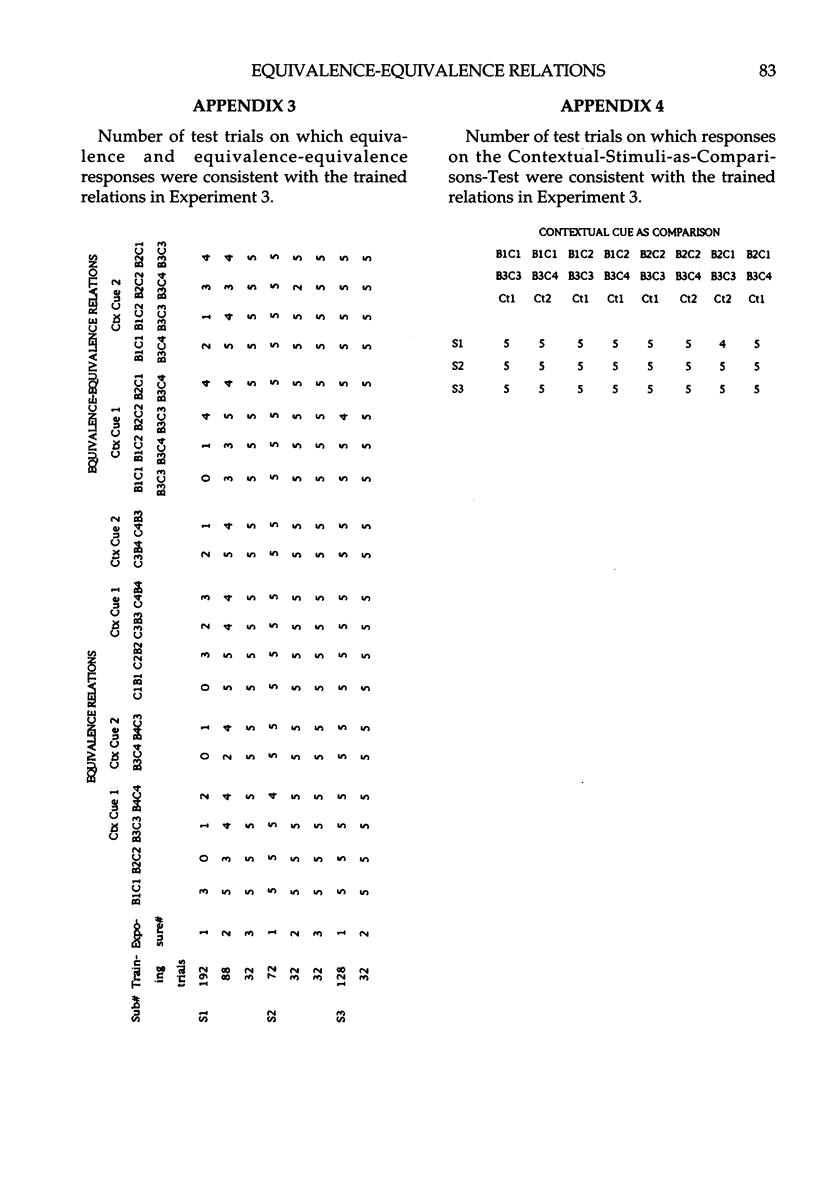
Selected References
These references are in PubMed. This may not be the complete list of references from this article.
- Bush K. M., Sidman M., de Rose T. Contextual control of emergent equivalence relations. J Exp Anal Behav. 1989 Jan;51(1):29–45. doi: 10.1901/jeab.1989.51-29. [DOI] [PMC free article] [PubMed] [Google Scholar]
- Dymond S., Barnes D. A transformation of self-discrimination response functions in accordance with the arbitrarily applicable relations of sameness, more than, and less than. J Exp Anal Behav. 1995 Sep;64(2):163–184. doi: 10.1901/jeab.1995.64-163. [DOI] [PMC free article] [PubMed] [Google Scholar]
- Fields L., Adams B. J., Newman S., Verhave T. Interactions among emergent relations during equivalence class formation. Q J Exp Psychol B. 1992 Aug;45(2):125–138. doi: 10.1080/14640749208401013. [DOI] [PubMed] [Google Scholar]
- Fields L., Adams B. J., Verhave T., Newman S. The effects of nodality on the formation of equivalence classes. J Exp Anal Behav. 1990 May;53(3):345–358. doi: 10.1901/jeab.1990.53-345. [DOI] [PMC free article] [PubMed] [Google Scholar]
- Hayes S. C., Brownstein A. J. Mentalism, behavior-behavior relations, and a behavior-analytic view of the purposes of science. Behav Anal. 1986 Fall;9(2):175–190. doi: 10.1007/BF03391944. [DOI] [PMC free article] [PubMed] [Google Scholar]
- Hayes S., Barnes D. Analyzing derived stimulus relations requires more than the concept of stimulus class. J Exp Anal Behav. 1997 Sep;68(2):235–244. doi: 10.1901/jeab.1997.68-235. [DOI] [PMC free article] [PubMed] [Google Scholar]
- Markham M. R., Dougher M. J. Compound stimuli in emergent stimulus relations: Extending the scope of stimulus equivalence. J Exp Anal Behav. 1993 Nov;60(3):529–542. doi: 10.1901/jeab.1993.60-529. [DOI] [PMC free article] [PubMed] [Google Scholar]
- Pérez-González L. A. Transfer of relational stimulus control in conditional discriminations. J Exp Anal Behav. 1994 May;61(3):487–503. doi: 10.1901/jeab.1994.61-487. [DOI] [PMC free article] [PubMed] [Google Scholar]
- Saunders R. R., Green G. The nonequivalence of behavioral and mathematical equivalence. J Exp Anal Behav. 1992 Mar;57(2):227–241. doi: 10.1901/jeab.1992.57-227. [DOI] [PMC free article] [PubMed] [Google Scholar]
- Stromer R., Mackay H. A. Spelling and emergent picture-printed word relations established with delayed identity matching to complex samples. J Appl Behav Anal. 1992 Winter;25(4):893–904. doi: 10.1901/jaba.1992.25-893. [DOI] [PMC free article] [PubMed] [Google Scholar]


